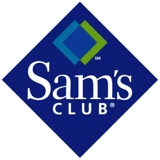Information
-
Document No.
-
Audit Title
-
Client / Site
-
Conducted on
-
Prepared by
-
Location
-
Personnel
General Items
-
Current company safety policy statement is posted and signed by management.
-
Emergency phone numbers are visibly posted.
-
Incident reporting protocol is in place.
-
OSHA poster is displayed
-
Safety committee minutes are posted.
-
List of first aid responders is prominently posted.
-
Hazard reporting plan is kept current and posted
Electrical Hazards
-
Minimum three feet of clearance is maintained in front of electrical panels.
-
Explosion-proof wiring fixtures are provided where necessary (per NFPA). and are well maintained and covered.
-
No evidence of frayed electrical cords or exposed wiring.
-
Portable electric tools are grounded.
-
GFCIs are provided within 20 feet of water sources and on all temporary wiring.
-
Switches or fixtures show no signs of overheating.
-
Fuse/breaker/cord size is appropriate for use and amperage rating is checked.
-
Grounded connections are provided, well maintained, with three prongs intact.
-
Motors and compressors are kept free of excessive grease, oil or dust.
-
High voltage equipment (over 600 volts) is securely enclosed.
-
Warning signs are posted.
Fire Protection
-
Extinguishers are visible, unobstructed, inspected. tagged and charged.
-
Fire alarm is tested and drills performed regularly.
-
Exits are clear, visibly marked and unlocked
-
Panic hardware or door alarms are provided and in working order.
-
Emergency evacuation routes are posted with clear orientation and origin points identified.
-
Fire doors and aisles are maintained, well located and unobstructed.
-
Flammable liquids are stored, handled and dispensed in a safe manner.
-
Automatic sprinkler system is locked open, tested, with 18 inches minimum head clearance.
Heating/Ventilation
-
Units are checked annually by qualified contractor with certificates on file.
-
Gas or electric sources shut off when not in use
-
There is at least three feet clearance for combustibles from contact with HVAC units or fixtures
-
Pressure relief features function properly.
-
Compressors are drained regularly.
Housekeeping
-
Waste and refuse is isolated from ignition sources and regularly removed.
-
No combustibles or storage are located next to the building.
-
Smoking is controlled or eliminated.
-
Metal waste cans are provided for oil-soaked rags.
-
Shelving and stock storage areas are stabilized and interlocked when possible
-
Loading dock plates or levelers are maintained and used properly.
Machines/Equipment/Power Tools
-
E-stops are red with yellow background, mushroom shaped, and easily accessible.
-
ON switches/controls are protected from unintended actuation.
-
Bystander/operator protection is provided on all moving parts of machines/equipment at least seven feet above the floor or work platform.
-
Employees are protected from contact with additional moving parts.
-
All electrical equipment is recorded on inspection schedule. Problems are promptly identified and corrected.
-
Safety glasses and face shields are both worn while working on grinders.
-
Safety distance is maintained and verified for each die/operation where applicable.
-
Safety features are in place for operators and set-up persons. Tool rest % inch.
-
Lockout/tag out procedures are utilized for equipment setup and equipment repair.
-
Disabled equipment is locked/tagged to avoid unauthorized use.
-
Machines are anchored to the floor and electrically grounded where appropriate.
-
Push sticks, plungers or similar tools are used to remove jams or feed parts.
Material Handling
-
Only certified and trained operators use lift trucks or PITs.
-
Mechanical lifting devices are used instead of manual handling.
-
Storage and workstation layout system reduces need for manual handling.
-
Mechanical assistance is provided for picking materials
-
Awkward physical movements with high manual force or repetitive tasks are controlled.
Motor Vehicle Safety
-
Vehicles are well maintained.
-
Inspection and preventive maintenance program is followed and documented.
-
Emergency kits, fire extinguishers and accident reporting forms are stored in all vehicles.
-
Trailer chocks or trailer restraint systems are provided and used.
Security Protection
-
All building openings are protected from access.
-
Parking lot and sidewalks are well maintained with no potholes, ice or tripping hazards.
-
Parking lot and building exterior is well lit.
-
Effective night lighting (interior/exterior) is provided over inventory/high value items.
-
Closing/lockup protocol is observed. Keys are controlled by management,
-
Visitors are not allowed in building without management approval.
Walking Surfaces/Stairways/Ladders
-
Floor and aisles are well marked and clear of waste, debris, scrap, spills and obstructions.
-
Walkways and surfaces are free of holes, imperfections and slipping hazards.
-
Stairway treads and railings are secured and clear of obstructions.
-
Stairways and walkways are well lit (interior and exterior) and emergency lighting is maintained for exits and paths in emergencies.
-
Ladders appropriate for use are in good condition and inspected on a regular basis. Safety feet are provided where needed.
-
Fixed ladders are equipped with side cages, rails. landings or special fall protection
-
Elevator doors and gates work properly, shafts are enclosed.
Welding Operations
-
Compressed oxygen/acetylene cylinders are safely stored, handled, labeled and dispensed.
-
Fuel lines/torches are protected with anti-flashback and/or back flow protection.
-
The appropriate class extinguisher is located nearby for emergency use.
-
Welding helmets are equipped with tinted lenses.
-
Safety glasses are worn.
-
Protective flame-retardant clothing and PPE used during welding.
-
Hot work permits and/or fire watch is used when welding occurs outside of booth confines.
-
Operations Manager's Signature
-
Agreed upon timeline to fixed defects.
-
Tentative date of Re-inspection








